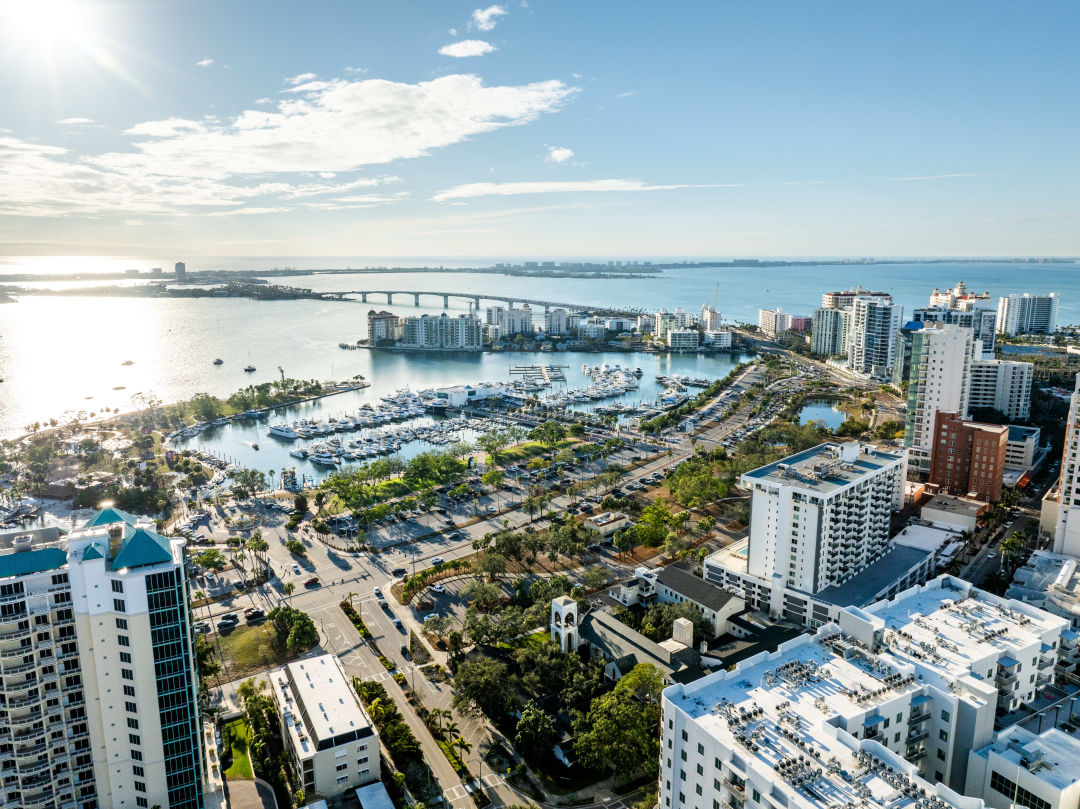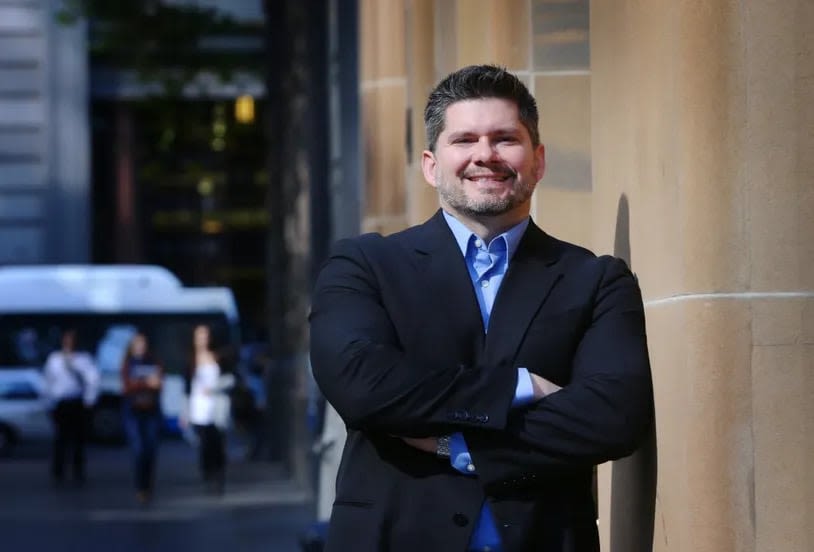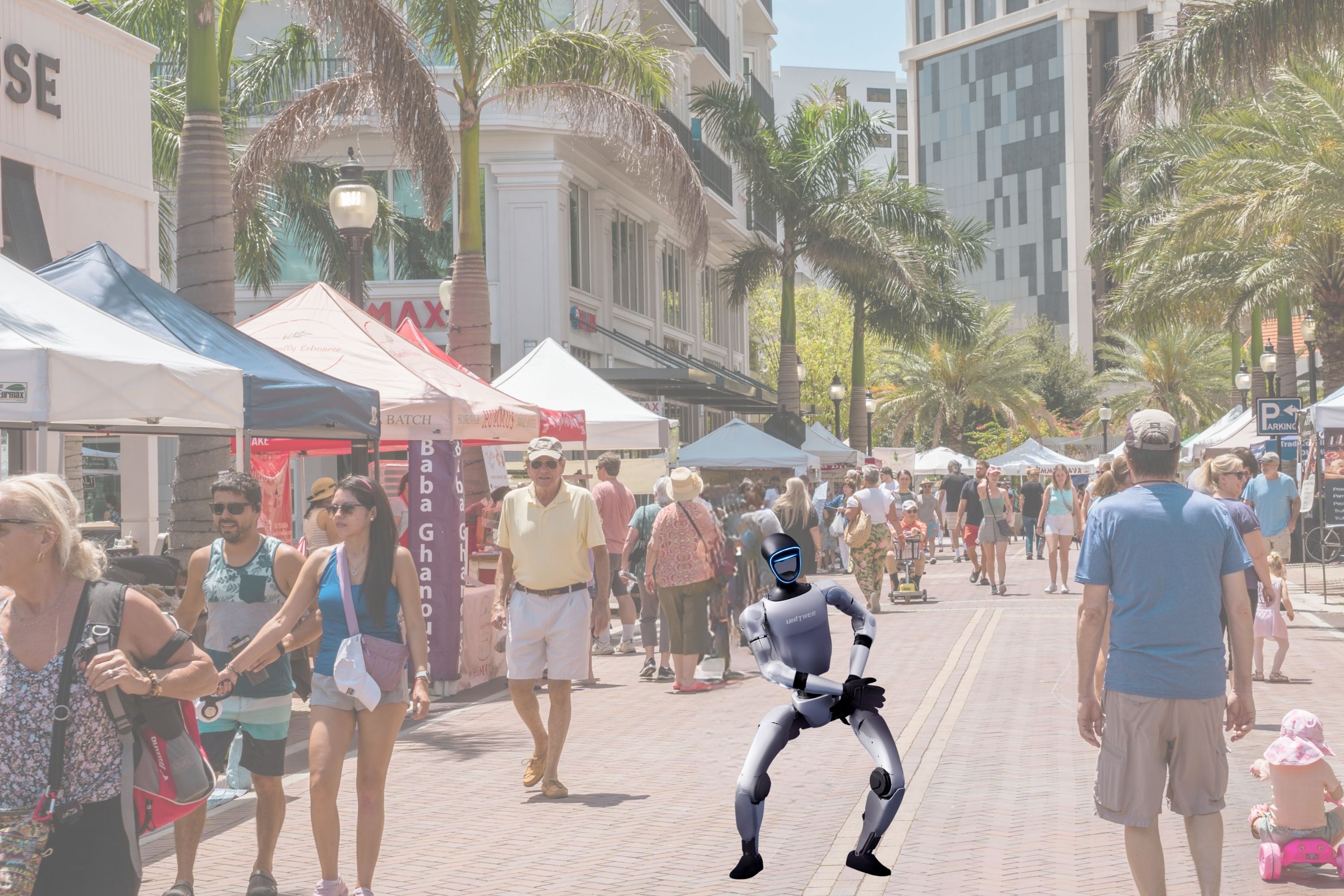An Architecture Sarasota Speaker Series Is Bringing in Renowned Urbanists to Discuss Our City's Future

When residents at last year’s Architecture Sarasota's Downtown Sarasota Series were told to “grow up, get a suit and stop wearing short pants” by urban planner Andrés Duany, much of the audience clutched its pearls—especially amid rising concerns about overdevelopment.
But whether Duany's lecture hit home or hit low, last year’s sold-out speaker lineup helped catalyze the City of Sarasota's decision to pursue a new downtown master plan and form a new ad hoc committee of 13 to help connect the dots. This year, many of the same topics are still front of mind for residents as single-story, humble buildings continue to be razed to make room for multi-level hotels and condo towers. A recent brutal hurricane season has also made resilience top of mind.
And now the lecture series is back. Called Downtown Sarasota: Beyond Our Borders, this year’s series brings three internationally recognized urbanists to provide a global perspective on Sarasota’s future. Gil Penalosa (Feb. 11), Brent Toderian (Feb. 25), and Paul Kalbfleisch (March 11) each bring decades of experience shaping cities worldwide. Their lectures will be informed by time spent in Sarasota, allowing them to tailor their observations and recommendations to the city’s unique challenges and opportunities. The goal remains the same: to stimulate meaningful dialogue and drive tangible action toward a more livable, inclusive and sustainable Sarasota.
Marty Hylton, president of Architecture Sarasota, emphasizes the importance of taking lessons from both this series and last year’s and ensuring they reach a broader audience. “The goal is to take what we have learned—both from last year’s series and this one—and share it more broadly with the community,” Hylton says. “We’re working on a report to capture the highlights, and we did a survey last year and will do one again this year to document key takeaways.” Those insights will be shared with the city and Sarasota’s new downtown committee, whose 13 members are attending the speaker series. “Getting all the stakeholders in the same room is powerful,” Hylton says. “It allows us to bring our own thoughts to the table in a collective conversation.”
Hylton sees a common theme emerging in these discussions: sustainability—not just environmental, but economic and social, too. “People recognize we’re fortunate to have assets in arts and design thinking, but the concern is: We’re a good city—how do we become great and sustain that?” he says. “Coastal resilience was on people’s minds even before the hurricanes. And how do we create a city that attracts younger families and professionals while managing the pace of development? Many feel that as we move into mid-size, we’re losing the small-town feel.”
Gil Penalosa: Cities for Everyone, From 8 to 80

Image: Courtesy Photo
Gil Penalosa, founder of 8 80 Cities and board chair of World Urban Parks, is known for his vision for cities that work for both an 8-year-old on a tricycle and an 80-year-old in a wheelchair. “Most cities don’t meet that standard,” he says, “but they need to be good for all.”
Penalosa plans to address aging in place, public transit, parklands and walkability—critical elements of an inclusive city. “We’ve added years to life, but not life to years,” he says, arguing that older populations are often seen as a burden when they should be recognized for their contributions. He emphasizes the role of public spaces in combatting loneliness, which the U.S. surgeon general has called the nation’s top public health issue. “We need programs and spaces where people can meet, dance, walk—many cities fail at this," Penalosa says.
He also stresses the importance of tree canopies, citing Melbourne, Australia's efforts to lower urban temperatures through strategic planting. “Change is hard, but businesses that opposed tree planting because they worried about visibility later benefited when more people came to shop in cooler, shaded areas," Penalosa says. He challenges Sarasota to think beyond single-family homes and high-rise towers, advocating for mid-rise development and flexible housing solutions. “A healthy city doesn’t force an 8-year-old to need a car to get ice cream," he says."
Brent Toderian: Density Done Right

Image: Courtesy Photo
Brent Toderian, an internationally respected city planner and former chief planner for Vancouver, Canada, is known for what he calls his “constructive candor.” He approaches urban issues with directness, believing that productive conversations require honesty. “I don’t give talks for a living. I’m a practitioner,” he says. “My job is urban diagnosis.”
Toderian is particularly interested in how Sarasota handles density, noting that discussions around urban growth are often too fixated on height rather than design quality. “People fear height, but bad short buildings are just as harmful as bad tall buildings,” he says. “The key is to build well—to design in a way that doesn’t steal views, kill streets or block out the sun for all.”
He also underscores the economic case for density, pointing out that thriving downtown businesses depend on a critical mass of people within walking distance. “Streets aren’t just for moving cars; they’re for people, and that’s good for business.”
Paul Kalbfleisch: Beyond Growth to Connection

Image: Courtesy Photo
Paul Kalbfleisch, the former vice president of creativity and brand strategy for Research in Motion and now a city strategy consultant, challenges the way cities frame their growth. “Growth has become a dirty word,” Kalbfleisch says, “and when something becomes a dirty word, people don’t want to talk about it—even when it’s inevitable.” Instead of debating whether growth should happen, he argues that Sarasota should focus on using growth as an opportunity to strengthen community connections.
Kalbfleisch sees cities as natural spaces for solving societal issues, given that institutions and corporations often have division built into their DNA. He critiques the traditional live-work-play model of urban planning and advocates for prioritizing public spaces and social infrastructure that foster belonging. “In a society struggling with loneliness and security, people crave living somewhere they feel they belong,” he says. “Cities are in control of that sense of ‘play’—and should be investing in it foremost.”
As these internationally recognized urbanists share their insights, the hope is that Sarasota doesn’t just grow—it evolves into a city that works for everyone. Hilton sees this as part of a broader effort to rethink Sarasota’s future. “Now that the ad hoc committee is in place, we want to re-envision our community,” he says. “We want to spark ideas on how we might strategize around affordable housing, climate resilience and the challenges of growing while maintaining Sarasota’s identity.”
Presentations take place 6-7:30 p.m. on Feb. 11, Feb. 25 and March 11 at Church of the Redeemer, 222 S. Palm Ave., Sarasota. Tickets are $50 for the three-part series or $20 per lecture and can be purchased here. For more information, call (352) 219-4122.



